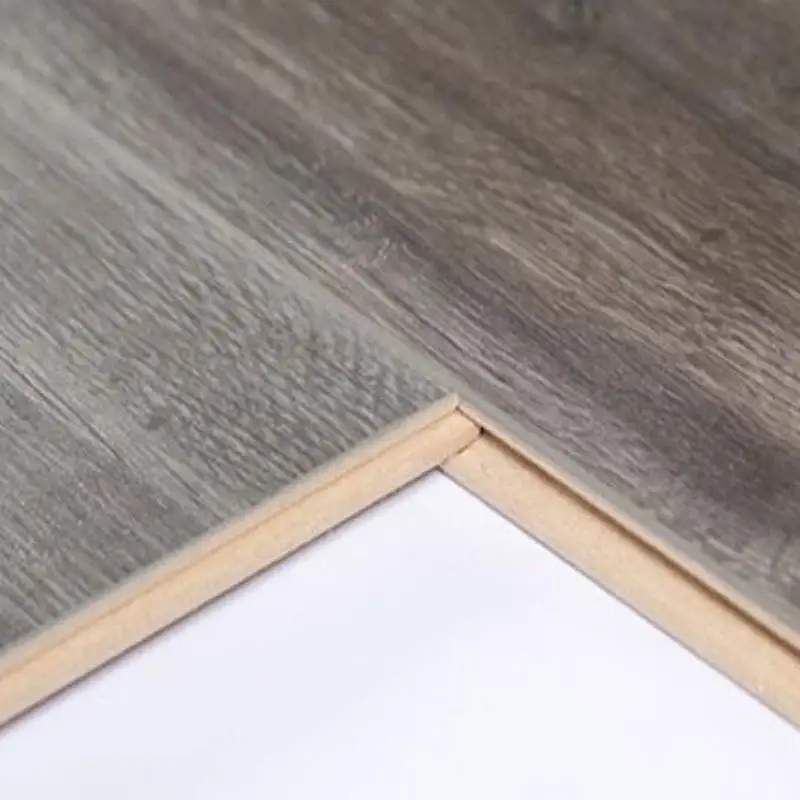Laminate flooring's a hot favorite for both regular home folks and the pros in the building world. It's got a lot going for it—like being tough, not costing an arm and a leg, and having plenty of styles to pick from. If you want to make sure you're picking the best flooring for your place, you've got to get the hang of the important stuff, like how dense it is, what kind of finish it has on top, and how the pieces click together. This article will go through each of these key elements to summarize why laminate flooring remains the flooring material of choice.
Understanding Laminate Flooring’s Core Strength
The thickness of your density of laminate flooring a lot when it comes to how sturdy and adaptable it is. If it's thicker, it's stronger and more solid, so it can handle getting knocked around and squeezed without a sweat. Floors that are packed tight muffle sound better, stay in shape, and are ready to take on lots of feet without looking worn out. So, keeping an eye on density is a smart move if you want your flooring to last and do a great job.
About the density of laminate flooring, it's all about how packed and heavy the core part—the high-density fiberboard, or HDF—is in each plank. The denser it is, the tougher it'll be against dents, dampness, and wear and tear, so it'll hold up longer. When you're shopping for this, check out the specs for density that the manufacturers list, which might be in pounds for each cubic foot or grams per cubic centimeter. You're going to want at least 600 kg/m2 for your home and go for even more if it's for a place with lots of foot traffic to make sure it can take a beating.

Laminate Flooring Surfaces Offer Looks and Function in One
The finish of the surface of laminate flooring is another differentiating factor. Laminate flooring rocks a bunch of different looks, copying stuff like wood, tile, or stone. This copycat trick lets folks have floors that give off the same vibe as natural materials, but without burning a hole in the wallet or being a pain to look after. Plus, the top layer of these floors puts up a good fight against scratches, dings, and spills, so it's not just a pretty face—it's a smart pick for keeping your space looking good.
The surface of laminate flooring mimics natural wood, stone, or tile with amazing precision. Advances in printing technology have made high-definition reproduction possible, while texturing techniques add depth and realism to each plank. The finish also plays a key role in protecting the floor from scratches and stains. A layer of aluminum oxide is a common addition, providing excellent resistance. An AC rating (wear standard) is selected to measure suitability, AC1 for light traffic and AC5 for heavy commercial use.
Ease of Installation with Laminate Flooring
The click of laminate flooring technology refers to the method used to connect the individual flooring boards. This cool tech is a game changer for putting stuff together fast and easy, which makes it a hit with folks looking to do some home upgrades on their own. It's not just about saving time but also ditching the sticky glue, leaving you with a neat and tight end result with no gaps in sight.
One of the most notable benefits of modern laminate flooring is the click system. This innovative installation method allows the planks to interlock seamlessly without the need for glue or nails, speeding up the process and facilitating DIY projects. Each variation offers a slightly different mechanism for joining the planks but shares the common goal of an easy, secure, and gap-free installation.
Conclusion
In summary, laminate flooring’s density, surface finish, and click of laminate flooring technology combine to contribute to its broad appeal. The combination of these features produces a strong, beautiful, and easy-to-install flooring option that is suitable for a variety of residential and commercial applications. Through continued innovation, the density of laminate flooring continues to provide practical and valuable solutions for today’s flooring needs.





